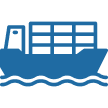Danish shipping company Maersk has decided to strengthen its omnichannel-fulfillment capabilities in Australia, opening seven new facilities across the country.
The expansion plans coincide with Maersk’s 30th anniversary in Australia.
The new facilities are part of the company’s global integrator strategy. Four sites have already opened earlier this year, while the remaining three will be ready until the first quarter of the next year. Two of these facilities were integrated into the Maersk network as part of its acquisition of LF Logistics.
Maersk will have eight facilities in Australia after the opening of all the new sites. The company also boasts five gateway ports and owned warehouse services in Sydney, Melbourne and Brisbane, with additional co-owned warehouse services in Perth and Adelaide.
Maersk’s addition of seven facilities in Australia brings its footprint from 15,900m² in Q1 2023 to 142,500m² by the end of Q1 2024.
“Six of the seven new sites will be omnichannel facilities, harnessing a variety of channels to interact with customers to fulfill orders,” said Maersk in a statement.
The recent opening of Maersk’s Derrimut facility in Melbourne harnesses progressive Artificial Intelligence (AI) technology to automate current warehousing processes. The facility caters to booming e-commerce fulfillment needs, as well as offering logistics solutions for different industries, including Footwear and Apparel, Beauty and Wellness, Healthcare, and Luxury Fashion products across Australia.
Kylie Fraser, Maersk’s managing director of Oceania, commented, “Our expansion throughout Australia is giving our customers a more efficient and sustainable service right throughout the supply chain. Australia imports a high volume of consumer goods, and we are excited to be able to continue to efficiently deliver goods while growing our business and contributing significantly to regional economic growth.”
As part of Maersk’s expansion in Australia, the Danish company offers new products such as Flex Hub service, which enables customers to reduce warehousing costs and reduce time to market by placing products closer to their end customer markets, and Captain Peter, which allows customers to see the temperature inside reefer containers carrying their produce, allowing them to change it as needed, giving customers more control of how their frozen or refrigerated goods are managed while in transit.
Sources: Container News
 Hotline: 0944 284 082
Hotline: 0944 284 082
 Email:
Email: 


 VN
VN